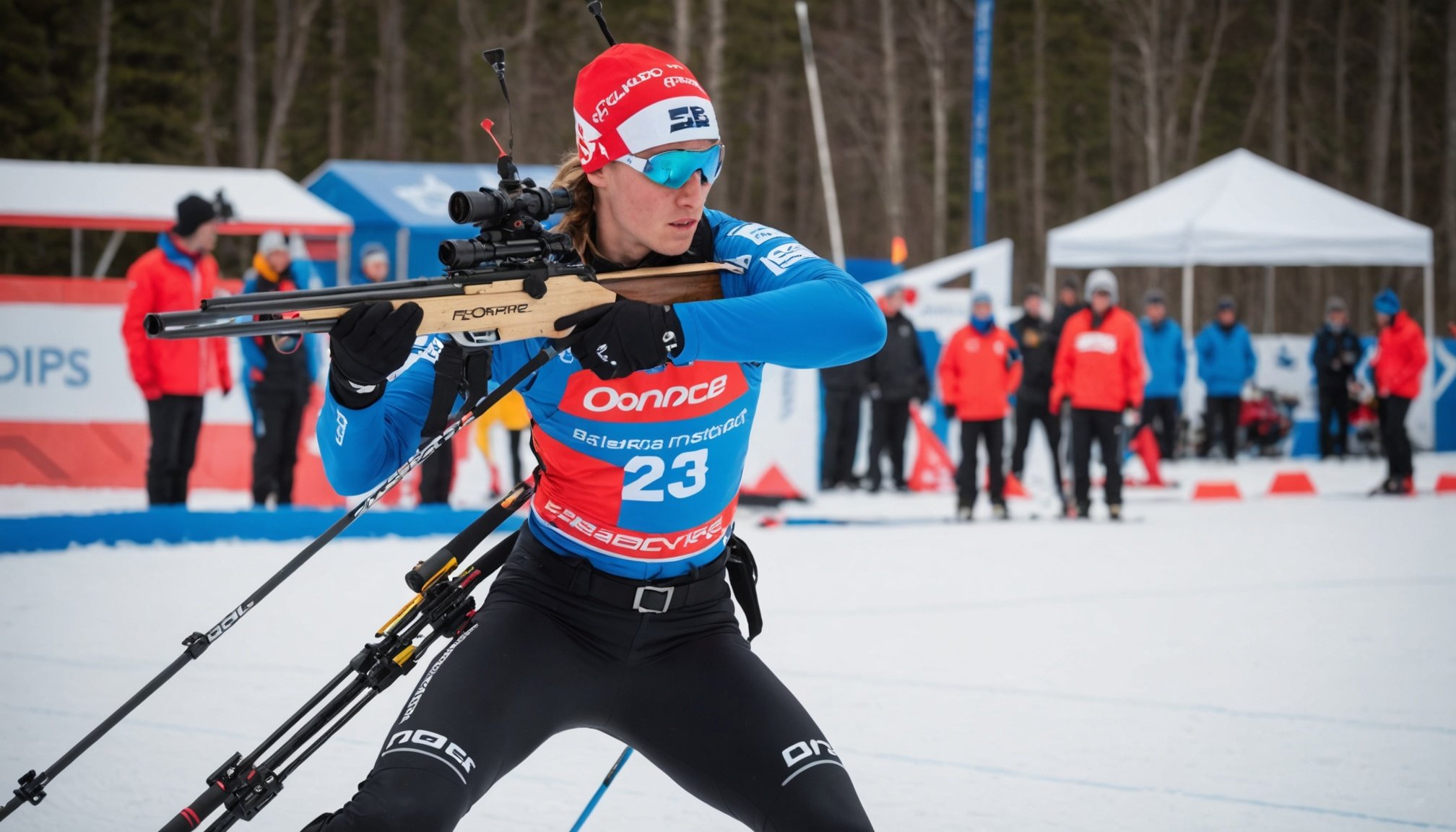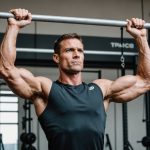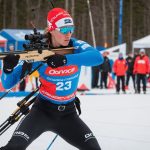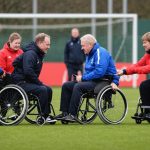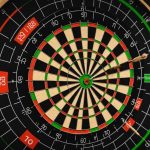Understanding Shooting Precision in Biathlon
Shooting precision is crucial in biathlon, a sport that uniquely combines skiing and marksmanship. In intense competitive shooting scenarios, even minor inaccuracies can result in significant time penalties, affecting overall rankings. Therefore, honing shooting precision is paramount for biathletes to excel.
Several factors influence shooting precision in biathlon. Biathletes must manage their physical exertion from skiing to maintain a steady hand while aiming and firing. Adverse weather conditions, such as wind and snow, can also impact shooting accuracy. Effective biathlon techniques, such as controlled breathing and optimal body positioning, are essential to counterbalance these challenges.
Have you seen this : Find your ideal tactical bag: durability meets style
Key performance metrics related to shooting precision include hit rate percentages and average time taken for shooting sessions. Successful athletes often exhibit high hit rates, where a higher percentage of targets are successfully hit with minimal shots. Precision is not just about hitting the target but doing so under pressure and within a constrained timeframe.
Further analysis of these performance metrics can offer valuable insights into where biathletes can improve. Through meticulous practice and refinement of biathlon techniques, athletes strive to enhance their precision, potentially shifting competitive outcomes significantly in their favour. Proficiency in this skill is a hallmark of elite biathletes.
In the same genre : Enhancing Dart Precision: The Best Tech Gadgets to Boost Your Game
Scientific Principles of Precision Shooting
Delving into the intricacies of precision shooting involves understanding a fusion of shooting mechanics, biathlon physics, and ballistics. These elements harmonise to produce the accurate shots vital for success, especially in sporting contexts like the biathlon.
Fundamentals of Firearm Functionality
To master precision, one must grasp the mechanisms at play within firearms. This encompasses the bolt action, trigger sensitivity, and barrel dynamics. Each mechanical aspect of rifle shooting influences accuracy—ranging from the manner in which the bullet accelerates through the barrel to the impact of recoil on the shooter’s aim.
Environmental Factors Affecting Shooting
Environmental dynamics also play a pivotal role. Factors such as wind, temperature, and altitude shift the predictable paths of projectiles. Wind can deflect bullets off target, especially over longer distances. Both temperature and altitude impact air density, altering projectile velocity and trajectory, thereby necessitating adjustments in aim and strategy.
Understanding Projectile Dynamics
A foundational grasp of basic ballistics concepts is essential for any biathlete. This includes the understanding of how kinetic energy and projectile force contribute to the velocity and trajectory. Grasping these principles enables shooters to anticipate bullet path changes and adjust their aim accordingly, maximising their shooting precision in any environment.
Cultivating expertise in these domains enhances overall performance, fostering a skill set that combines the science of precision with practiced technique.
Mental Conditioning Techniques
Fostering mental toughness is crucial for maintaining precision in high-pressure situations. Developing a strong mental game can often be as important as the physical aspects of training. Emphasizing focus techniques ensures that distractions don’t disrupt performance, allowing athletes to stay truly in the moment.
One powerful approach to enhance concentration is visualization. This technique involves mentally rehearsing the perfect execution of a skill, providing athletes with a clear and vivid picture of success. Visualization equips individuals to manage stress by visualizing how they would react in high-stakes scenarios. It becomes a tool for creating a sense of familiarity with competition settings, mentally walking through each step of the process.
Mental rehearsal is another effective strategy, enabling athletes to practice their responses to pressure in a controlled environment. Imagining various challenges and one’s successful responses to them prepares the mind to confront self-doubt and anxiety.
Overcoming anxiety requires more than just visualization; it involves developing effective coping strategies. Techniques such as deep breathing and maintaining a positive inner dialogue can be helpful. Encouraging athletes to shift their focus from outcome to process can alleviate pressure and bolster confidence, turning potential self-doubt into an opportunity for growth and improvement.
Practical Drills for Improving Shooting Skills
To hone your shooting skills, engaging in varied shooting drills is essential for effective skill development. Establishing a rounded practice regimen can make a significant difference in performance.
Static vs. Dynamic Shooting Drills
One fundamental aspect of skill sharpening involves understanding static versus dynamic drills. Static shooting drills focus on aiming accuracy while remaining stationary, ideal for calibrating your shot precision. Conversely, dynamic shooting drills simulate real-world scenarios. These drills require movement, challenging your ability to maintain accuracy under changing conditions.
Target Acquisition Techniques
A crucial component to successful shooting is mastering target acquisition. Developing techniques to quickly focus on your target can greatly enhance your effectiveness. Practicing with varied targets aids in sharpening reflexes and improving target response time, thus elevating your overall performance.
Incorporating Movement into Shooting Practices
Incorporating movement into your practice regimen is invaluable. It helps simulate competition scenarios, providing a more comprehensive training experience. To truly mimic a competitive environment:
- Move in different directions between shots
- Practice timed drills to enhance decision-making
- Adjust your stance regularly to increase adaptability
By focusing on these drills, incorporating diverse shooting techniques, and maintaining a rigorous practice regimen, you can enhance your shooting skills, preparing yourself for high-performance in competitive settings.
Strategies for Managing Competition Stress
Understanding the unique stress triggers biathletes face during competitions is crucial for effective stress management. High-pressure environments can amplify nerves and impact performance. Common stressors include the fear of failure, intense audience scrutiny, and unpredictable weather conditions. Identifying these triggers helps in crafting personalized stress management strategies.
To maintain composure and focus, athletes often employ techniques such as deep breathing exercises, visualisation, or meditation. These methods promote a sense of calm and help centre the mind, ensuring that biathletes stay focused amidst the chaos. Consistent practice of these techniques can significantly enhance performance under pressure, improving overall outcomes in competitions.
One fascinating case study involves distinguished biathlete Darya Domracheva, who managed stress by visualizing success before each event. Her routine highlights how personalizing stress management techniques can lead to remarkable achievements. Similarly, biathlete Ole Einar Bjørndalen emphasized preparation, allowing him to maintain poise even when faced with competition stress.
Tailoring strategies to the individual is key. By adopting and adapting these methods, athletes can find success in competition while maintaining mental well-being. Through understanding and managing stress, biathletes unlock the potential for peak performance and personal growth.
Real-Life Examples and Case Studies
Exploring the world of biathlon, athlete profiles showcase intriguing stories of resilience and triumph. By examining biathlon success stories, we unearth valuable insights into performance improvement.
Case Study Analysis of Top Biathletes
In analysing the careers of top biathletes, common threads begin to emerge. Many of these athletes exhibit a blend of mental fortitude and strategic training. For instance, biathlete Martin Fourcade, renowned for his impeccable shooting and skiing skills, attributes much of his success to a balanced approach to training. His regimen combines rigorous physical conditioning with precision shooting exercises, emphasizing consistency. Such strategies have led him to numerous World Cup victories.
Lessons Learned from Competitive Experience
Competitive experience often leads athletes to refine their techniques. Frequent competition exposes biathletes to diverse conditions, prompting adaptability. Through these challenges, they learn where their strategies falter. This iterative process aids in enhancing shooting precision under pressure, a crucial skill in biathlon success. Athletes like Darya Domracheva have adapted by focusing on mental resilience and endurance.
Comparative Analysis of Different Training Approaches
Different training approaches offer varied benefits. Training regimens that integrate both endurance and skill-focused drills are instrumental in performance enhancement. Successful biathletes like Fourcade have shown that a combination of strength training and technical practice results in a competitive edge. Understanding these methods allows emerging athletes to tailor their training for optimal results.
Continuous Improvement in Shooting Precision
To enhance shooting precision, consistent performance review and feedback are key components. Regular assessment allows athletes to identify strengths and address weaknesses effectively. By analyzing past performances, shooters can tailor their training to maximize skill improvement.
Setting measurable goals is crucial for real progress in shooting practice. Goals should be specific, such as improving accuracy by a certain percentage within a defined timeframe. A focused approach ensures that each practice session yields tangible results. Tracking progress regularly and adjusting objectives keeps motivation high and training focused.
Integrating learnings from past competitions into training plans is another vital aspect of skill advancement. Reflect on specific scenarios that challenged you, and incorporate strategies to overcome similar situations in future practice. By doing so, you transform competition experiences into valuable learning opportunities, enhancing your competitive edge.
It’s important to understand that training evolution is a continuous journey. Regular skill assessment helps maintain an upward trajectory in performance. As you adapt your training based on feedback and set SMART goals—Specific, Measurable, Achievable, Relevant, and Time-bound—you set yourself up for sustained improvement. With each cycle of evaluation, goal-setting, and practice, shooters move closer to mastering their craft.

